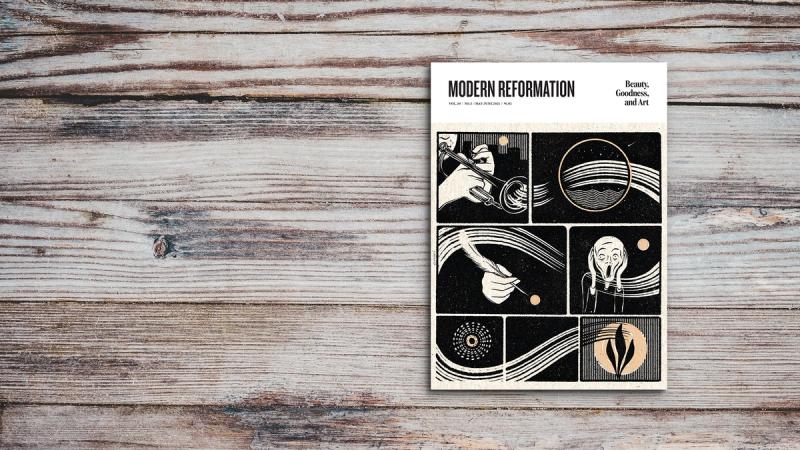A Peculiar Orthodoxy: Reflections on Theology and the Arts
By Jeremy S. Begbie
Baker Academic, 2018
224 pages (hardcover), $33.00
In our increasingly secular age, we have all but divorced the arts from theological consideration. It wasn’t long ago that many of the most famous artists in the West were inspired to create out of adoration and exploration of their God and his world. We might forget this is how it’s supposed to be. The God of the Christian Scriptures is the God of art—a Creator who is glorified when others take up the act of creating as well. The gift and skill of artistry comes, like all things, from God himself. We can think of Bezalel and Oholiab, two men filled “with the Spirit of God, with skill, ability and knowledge” in order to bring to life the beauty and intricacy of God’s tabernacle (Exod. 31:1–3, 6).
Today, however, the arts are more often a venue for expressive individualism and not as much for glorifying God. In that sense, A Peculiar Orthodoxy is a welcome curative, as Begbie gets us thinking about the often overlooked intersection between the arts and theology. It’s an important subject to recover, as art can be one of the most effective media for declaring God’s truth, as well as one of the most important venues for studying it. As Begbie notes,
It is not only theologians and ecclesiastical councils who lead the way in doctrinal development (through the media of verbal propositions and statements) but also painters, storytellers, and other artists—the works of creative imagination are integral and indispensable to the process. (131–32)
Begbie is the right man for the job of recovering a robust theology of the arts. He serves as professor of theology at Duke Divinity School and is an accomplished musician himself. He has written and presented extensively on the arts and theology, and in this volume, he brings together some of his best essays on the subject. Any serious artist or appreciator of the arts would do well to engage with his work.
One of the strands that runs throughout Begbie’s essays, that certainly informs nearly every aspect of his approach to the topic, is the reality of God as triune:
It will be obvious that I believe the confession of the triunity of God cannot be treated as a merely intellectual nicety or an optional luxury. . . . That the God of Israel and Jesus Christ possess a threefold life will configure and reconfigure every dimension of Christian faith. When unleashed in the arts, a trinitarian imagination will provoke a freshness and abundance of possibilities that in many places we are only just beginning to discover. (ix)
Therefore, Begbie argues that one cannot have a proper conception of beauty, in theological terms, without a proper conception of God as he reveals himself in Scripture. In the opening pages, Begbie writes, “If an account of beauty is to be theo-logical in Christian terms, its logos, or rationale, will take its shape primarily from the being and acts of this theos” (2). Art is “created beauty”—or perhaps better, re-created beauty, as our expressions of beauty are echoes of the “ecstatic love” God has shared and expressed within the relationships of the Trinity for eternity (4). Grounding the discourse in what has been and always will be true of God gives the subject of the arts the dignity it deserves and perhaps has lost over the centuries. The superb chapter on natural theology and the arts serves this end as well (129–44).
But this “primordial beauty” is not an abstract principle locked away in eternity past. As Begbie points out, it has come home to us in the cross of Christ. In the story of the incarnate Son living the Father’s presence by the Spirit’s power, “Trinitarian beauty has . . . been performed for us” (4). The cross is the other theological reality that seems to undergird Begbie’s approach. In particular, the cross comes into key focus in his essay on sentimentality and beauty. Begbie defines sentimentality here as that which trivializes evil and is emotionally self-indulgent. The Christian can permit neither, nor does he have to. “A constant remembrance of the cross will prevent the pleasure that rightly attends beauty from sliding into sentimentality, for beauty at its richest has been forged through the starkness and desolation of Good Friday” (44). In other words, our greatest emotional lift comes not by erasing or forgetting evil, but in knowing that evil has been defeated through Christ. The cross and the resurrection embody God’s beautiful plan for the world.
This theme is carried on in a following essay about art and emotionalism, a chapter I found most compelling and particularly relevant to the church, as worshipers can often be caught up in a feeling—and not in faith—in the act of worship, especially by the music. I appreciated the balanced perspective that states: “The greatest danger lies not in emotion per se but in emotion that is not properly directed and/or inappropriate” (61). Thus the protection of the abuse of emotion is not to rid it from worship altogether. Far from it! Emotions are God-given and therefore are meant to be God-glorifying as well. In worship, we should exercise God-glorifying emotions. “To ‘grow up’ into Christ is to grow up emotionally as much as anything else” (76). We respond rightly, and maturely, to God in worship when we remember our union to Christ—the full and faithful human, who “embodies and enacts faithful worship.” Our humanity has been taken by Christ into the Father’s presence now, in an act of eternal worship. By the Spirit (again, the Trinitarian contours shine through) in worship, we are brought into conformity to that act of the Son: “Worship is an invitation to be dehumanized as we grow in likeness of Christ” (61). To ensure God and not man is the focal point of worship, those whose privilege and responsibility it is to lead God’s people in corporate worship—pastors, hymn writers, composers, and musicians—must weigh the implications of this chapter as they execute their high calling.
A Peculiar Orthodoxy is not light reading. It will stretch even those familiar with the categories, both theological and artistic, that Begbie employs throughout the book. But it’s a particularly rewarding read as well. Along the way, readers engage with luminary conversation partners such as J. S. Bach and George Herbert and learn of the potential of the Reformed tradition in particular to recapture a high view of the arts. But the best thing the book offers is the grand and glorifying conception of God: beautiful from and for all eternity.
Jonathan Landry Cruse pastors Community Presbyterian Church in Kalamazoo, Michigan. He is the author of Hymns of Devotion and What Happens When We Worship.








